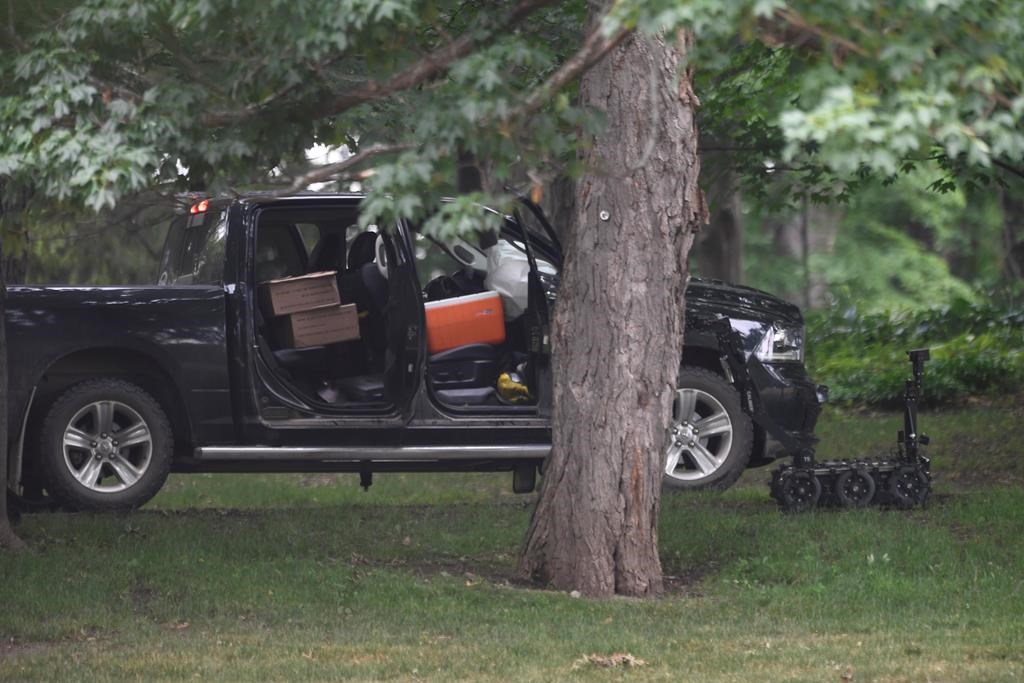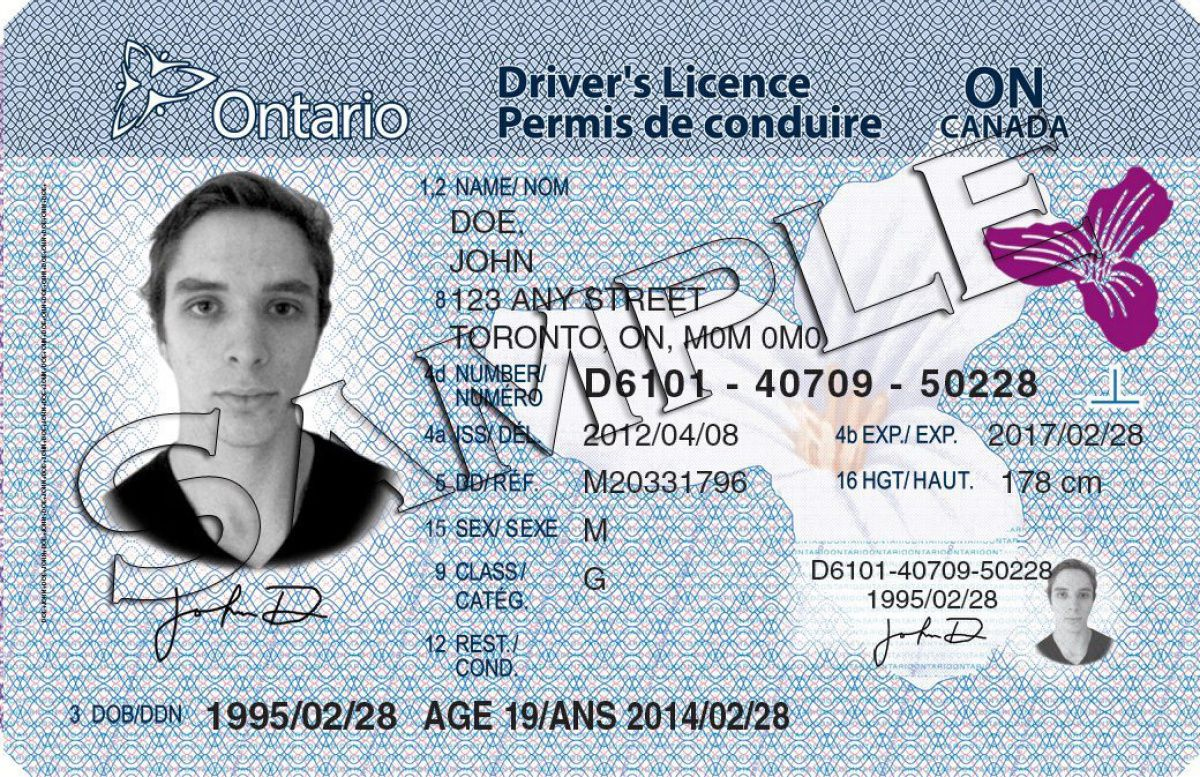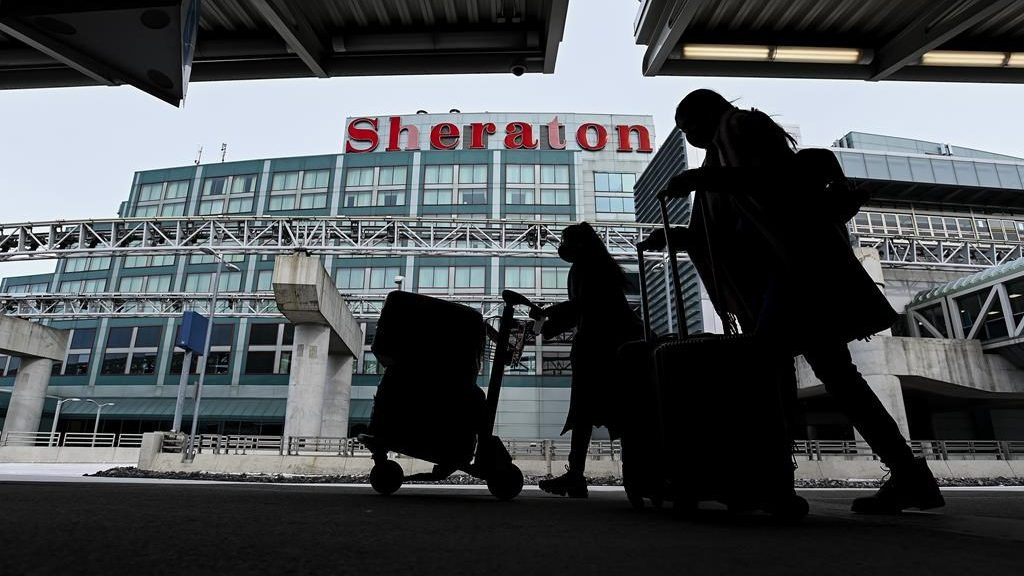The province launches its much awaited online vaccine booking portal and call centre on Monday with a warning to anyone outside of the priority group thinking of jumping the queue.
WATCH: https://toronto.citynews.ca/2021/03/14/ontario-set-to-launch-covid-19-vaccine-booking-portal-and-call-centre-monday/
Individuals 80 years and older (born in 1941 or earlier) plus those in the Phase 1 priority group who are eligible to receive the vaccine at this time can visit ontario.ca/bookvaccine to make an appointment or by calling 1-888-999-6488.
The portal, which is set to go live on Monday at 8 a.m., will allow people to book their first and second vaccination appointments at the same time.
“If you’re going to be 80 this year, if you’re going to be 80 in September or October, November, please go online and book your appointment.” – Premier Doug Ford
Retired Gen. Rick Hillier, who is heading up the provincial vaccination effort, has already cautioned about delays and a potential crash of the website once it is up and running on Monday morning. That is why provincial officials are asking that anyone outside of the priority group stay off the website until it is their turn.
“For the online booking system, we have more than 800,000 appointments that are going to be available,” said Hillier. “We have stress tested the system over the last week’s here, including with Toronto Public Health, and since Friday we’ve booked more than 15,000 appointments using the online booking system. It was done without a flaw.”
“We are confident in the system itself but we all know that in many places, there are some hiccups and sometimes the systems go down for a while and if it does, we’ll fix it and get it back up,” he added.
Hillier adds the call centre will utilize more than 2,200 operators and the system is capable of handling approximately 10,000 calls an hour.
When compared to California, Quebec and other places who experienced call centre issues, “that is twice or three-times the capacity to handle calls,” said Hillier. “We’re prepared to ramp up even further if necessary.”
To book an appointment, individuals will need to have a green photo health (OHIP) card as both numbers on the front and back of the card are required. Expired cards will be accepted.
For those people who still have the red and white health card, they will have to make their appointment using the call centre.
Despite provincial data which shows just under 42,000 vaccines were administered on Saturday — down from the more than 53,500 done the previous day — Ford says the province is ready to get even more shots into the arms of Ontarians.
“We are ready,” said Ford. “We are ready to ramp up immediately to 150,000 vaccinations a day, we just need more vaccines. We have the capacity to do 4.8 million (vaccinations) in a month and we have 1.4 million coming in through March.”
City of Toronto officials say their online booking system will be offline as of 8 p.m. Sunday night in order to allow for a transition to the provincial system. It will be available to book appointments again starting at 8 a.m. Monday.
Starting Wednesday, the City will begin vaccinating residents born in 1941 and earlier at mass immunization clinics located in the Metro Toronto Convention Centre, Toronto Congress Centre and Scarborough Town Centre.
Some family doctors in Ontario started administering the AstraZeneca COVID-19 vaccine to people aged 60 to 64 years old in the regions of Hamilton, Toronto, Guelph, Peterborough, Simcoe-Muskoka, and Peel Saturday. The Ontario Medical Association says there are a limited number of doses and they’re asking people not to call their doctors’ office, saying that physicians will contact eligible patients.
As well, select pharmacies in Toronto, Windsor-Essex and Kingston are also offering the AstraZeneca vaccine to residents in the 60 to 64 age group.
To book an appointment, eligible Ontarians aged 60 to 64 can visit ontario.ca/pharmacycovidvaccine to find a participating pharmacy.
Note: An earlier version of this article erroneously stated that priority groups in Phase 2 would also be able to book appointments starting Monday. Currently only those in Phase 1 groups are permitted to book appointments.

MC Hammer Taiwanese Popcorn Chicken
Recipe by: Trevor Lui
Instagram: @trevorlui
Prep: 5 Minutes, plus 8 hour marinating time
Cook: 5 – 10 minutes
Ingredients:
- 2 cloves garlic, finely chopped
- 2 tsp mirin
- 1 tsp sesame oil
- 1 tbsp soy sauce
- 1 tsp sugar
- 2 skinless, boneless chicken thighs cut into 1-inch pieces
- 1 cup potato starch
- 3 cups canola oil
- 1/2 tsp salt
- 1/2 tsp white pepper
- 8 Thai basil leaves
- Chilli sauce or plum sauce to serve

Customers always asked about the name of this dish. When I was growing up in the eighties and nineties, MC Hammer was a popular music artist and, at one point, a brand celebrity for a fried chicken company. I recalled his Hammertimne dance promoting popcorn chicken, and hence the name MC Hammer Taiwanese Popcorn Chicken. the dish, derived from Japanese Karaage and makes for a great party snack or side dish.
In a medium mixing bowl, combine garlic, mirin, sesame oil, soy sauce (or tamari), and sugar. Add chicken to the marinade, stirring to coat. Cover and refrigerate for at least 8 hours.
Put potato starch in a medium bowl. Add chicken and stir well to ensure all pieces are thoroughly covered.
Heat oil in a medium saucepan over high heat. Using a metal slotted spoon, slowly lower chicken into the oil and deep-fry for 5-6 minutes until golden, crispy brown and internal temperature is 180ºf. Transfer chicken to a plate lined with a paper towel to drain.
In a large bowl, combine chicken, salt and pepper.
using a metal slotted spoon, lower basil leaves into the hot oil and deep-fry for 6-8 seconds. Transfer leaves to a plate lined with a paper towel to drain.
Garnish popcorn chicken with the basil leaves and serve immediately with chilli or plum sauce.

Ontario’s Transportation Minister says she was made aware of a disturbing discovery at a Toronto construction site on Wednesday night.
In a tweet, Caroline Mulroney said a noose was found at the Eglinton Crosstown Leaside construction site and police are investigating.
Toronto police did not confirm the discovery of a noose, but said they were called to the site just before 8 a.m. Thursday for a “suspicious incident.” They said the investigation is in the very early stages and officers are gathering information.
“Once investigators are in a position to share details an update will be made available. In terms of the ‘suspicious’ element, we are still firming up the facts,” they said in a statement to CityNews.
Mulroney added in her tweet that “racism and hate, in any shape or form, will not be tolerated in Ontario.”
She also said the province is working with Metrolinx regarding the matter.
Metrolinx CEO Phil Verster echoed Mulroney’s sentiments in a statement, reiterating a zero tolerance policy for racism and bigotry.
“When the person, or people, who carried out this despicable act are identified, they will be banned from working on any present or future Metrolinx projects,” he said.
He added that Crosslinx — the consortium building the Eglinton Crosstown line — have assured him that they are “taking this incident very seriously and are fully cooperating with the police investigation.”
Crosslink spokeswoman Kristen Jenkins also condemned what she called a “deplorable act,” saying those responsible will be held accountable.
“Crosslinx is disgusted that this racist act happened on one of our sites. Crosslinx has zero tolerance for racism and any kind of discrimination,” she said in a statement.
This is the second time a noose has been found on a Crosstown site. The first was last July where Fairbank Station is being built near Dufferin and Eglinton. A construction worked was fired and removed from his union in connection with that incident.
In a separate incident, two nooses were also found on a job site at Michael Garron hospital, and one each in Regent Park and in the city’s downtown core.
Police made an arrest connected to the hate crime on the Michael Garron hospital construction site.
Metrolinx spokeswoman Anne Marie Aikins added that the incident is disappointing given that the construction industry has made a lot of progress since last year.
“They signed pledges and they’ve been working really hard … people are taking it very seriously, so this was very sad that this happened again,” she said. “But I think it just encourages us to all continue to work as hard as we can to root out this kind of hate.”

Mayors in Peel Region are asking the province to further loosen restrictions in their communities days after a stay-at-home order was lifted.
Peel Region – made up of Mississauga, Brampton and Caledon – was moved into the strictest “grey lockdown” category of the province’s pandemic framework on Monday, following nearly two months under the stay-at-home order.
That meant non-essential retailers could reopen with capacity limits, although gyms, personal care services and indoor restaurant dining remain closed.
The mayor of Mississauga is calling for her city to now be moved to the second-strictest “red” category of the framework, without or without the other communities in Peel.
Brampton’s mayor also says Peel should be placed into the “red” zone and councillors in his city voted to ask the province to make that move as soon as possible.
Being in the “red” zone would allow gyms to reopen with capacity limits and indoor restaurant dining and personal care services to also resume with restrictions.
Peel’s top doctor, Dr. Lawrence Loh had called for the region to be placed in the “grey” zone, saying it would preserve the progress made in the fight against the virus.
At that time, Mississauga Mayor Bonnie Crombie said she would have preferred a move to the “red” level but understood the region being placed in the “grey” zone.
Loh says his public health unit is monitoring COVID-19 data closely and will soon be making a recommendation to the province on where the community should be in the pandemic framework.
Caledon, Ont., Mayor Allan Thomspon did not immediately respond to a request for comment.

Provincial officials say while vaccinations in long-term care settings are paying off, progress in containing COVID-19 has stalled as variants of concern continue to spread across Ontario.
New modelling data released by Ontario’s COVID-19 Science Table on Thursday suggests that while there has been a decline in community cases and the test positivity rate has levelled off, most public health units are now seeing an increase in COVID-19 as regions have begun to relax restrictions.
As more Ontarians get vaccinated, focusing that coverage on areas where the impact is greatest will be important as real-world evidence has shown vaccines reduce infection and decrease transmission.
The data shows that vaccinations in long-term care are paying off as staff and resident cases continue to decline while deaths have flattened. The province reported its first death among long-term care residents on Thursday after five days of no new deaths while 85 total deaths were reported this past week across the province.
The variants of concern continue to spread across the province and controlling the rate of that spread will determine whether we return to normal or face a third wave.
An additional 48 cases of variants of concern were confirmed in the province on Thursday, bringing the provincial total up to 1,025.
According to the modelling, the province could see upwards of 8,000 cases a day by April in a worst-case scenario. Under a best-case scenario, the province could see fewer than 2,000 cases day. Under the most optimistic projection, the province could see over 1,600 daily cases by early April. Those numbers will depend on the province’s efforts when it comes to dealing with the spread of variants and vaccination efforts, according to Dr. Adalsteinn Brown.
Our behaviour over the next few weeks is critical in determining the quality of our summer
The modelling data also shows that the strain COVID-19 patients are putting on the health care system continues to take a toll.
The decreases in COVID-19 hospitalizations and ICU occupancy have started to level off following a subtle decline. Officials say we could see between 400 and up to 600 COVID patients in the ICU under the best and worst case scenarios, which amounts to a “small increase on top of an already strained system.”
There also remains a high volume of postponed care and missed screening and preventative care across all sectors. As of February 21, there were more then 227,000 backlogged surgical cases while cancer screening volumes have “declined substantially,” setting up long-term consequences for cancer outcomes.

A Canadian vaccine researcher says he believes that Chinese political machinations ended a vaccine partnership last summer.
Dr. Scott Halperin, the director of the Canadian Centre for Vaccinology, made the accusation Thursday to the Special Committee on Canada-China Relations.
The partnership was originally planned to be between China’s CanSino Biologics and the Canadian Centre for Vaccinology at Dalhousie University in Nova Scotia. CanSino had been given a licence by the National Research Council to use a Canadian biological product as part of a COVID-19 vaccine.
China blocked shipments it was supposed to send to Dalhousie researchers by the end of May 2020 to start human trials.
Halperin said he was initially told it was due to bureaucratic issues such as paperwork.
By August, he said, it became clear that the Chinese government had no desire for the vaccine to leave the country.
Halperin said he realized paperwork wasn’t to blame after he discovered the vaccine had been given the green light to be shipped out of China to Russia, Pakistan, Mexico, Chile and Argentina — all of which were countries researchers had planned to stage the third phase of the clinical trials in.
“It was clear that this was not … that CanSino wasn’t able to ship out of the country, but that it was specific to Canada,” he said Thursday.
“That’s when it became clear it was political and not something that was going to be solved by more paperwork.”
CanSino Biologics did not immediately return a request for comment.
Halperin said CanSino officials repeatedly assured researchers that the issue would be sorted out, but the delays quickly led to the work researchers had done to become irrelevant.
“Up until that point the dates of scheduling them kept rolling back and back and back until finally the vaccine had to be shipped back from the airport to the company,” he said.
Members of the special committee questioned Halpern over whether he knew that CanSino had connections to the Chinese government before the partnership started.
“I was aware that the founders had previously worked in Canada at Sanofi Pasteur and then had gone back to China to start that company,” he said.
Halperin was also questioned over what CanSino gained from the partnership, such as access to Canadian research, without offering anything in return.
“For the Phase 1 study that ended up being cancelled, they gained nothing and we gained nothing because we were not able to generate any data from the planned study,” he said. “It just ended up being a waste of a lot of time on all parties.”

A Manitoba man who rammed his truck into Prime Minister Trudeau’s home at Rideau Hall last year has been sentenced to six years in prison minus one year for time served.
WATCH: https://toronto.citynews.ca/2021/03/10/rideau-hall-manitoba-man-sentencing/
Corey Hurren will also be prohibited from possessing any firearms, ammunition or explosive substances for life.
Hurren had initially faced 21 weapons charges and one of threatening the prime minister. He pleaded guilty last month to seven weapons related charges.
In his sentence Ontario Court Justice Robert Wadden said the degree to which Hurren was armed was “shocking.”
“I find that Mr. Hurren represents an ongoing risk,” Wadden said.
“This was an armed aggression against the government, which must be denounced in the strongest terms.”
There was a risk that Hurren’s guns could be used to cause serious bodily harm or death, Wadden said.
“The deliberateness of Mr. Hurren’s actions and his intentional use of loaded weapons to make a political statement bring him a long way from a usual first offender caught with a single gun.
“Corey Hurren committed a politically motivated, armed assault intended to intimidate Canada’s elected government.”
The 46-year-old military reservist was arrested while he was he headed on foot to confront the Prime Minister on the morning of July 2, 2020.
He was initially accused of uttering a threat to “cause death or bodily harm” to Trudeau.
But according to an agreed statement of facts read in court on Feb. 5, Hurren told police he didn’t intend to hurt anyone, and that he wanted to arrest Trudeau to make a statement about the government’s COVID-19 restrictions and its ban on assault-style firearms.
He said he had hoped to make the arrest during Trudeau’s daily pandemic briefing outside Rideau Cottage.
Hurren, who told police he hadn’t qualified for emergency aid benefits, was angry about losing his business and his guns. He believed Canada was turning into a communist state.
Hurren also told police at the scene that he wanted to show Trudeau “how angry everyone was about the gun ban and the COVID-19 restrictions” and said the prime minister “is a communist who is above the law and corrupt.”
Data retrieved from his cellphone, Facebook and Instagram posts included exchanges with friends about “conspiracy theories related to the Canadian government,” as well as a “sacrifice theory” related to the date of the mass shooting in Nova Scotia last April and suggestions that COVID-19 is a hoax.
Hurren later told a doctor he expected to be shot dead.
Crown prosecutors had been seeking a six-year sentence, saying Hurren’s actions posed a serious threat to public safety.
Hurren’s lawyer, Michael Davies, had sought a sentence of three years for his client, describing him as a hardworking member of society who suffered financial difficulties during the COVID-19 pandemic that put him into a state of depression.
The judge said the defence request was not reasonable in this case, adding Hurren represents and ongoing risk and should seek treatment for a mood disorder and major depression.

It has been over a year since the province introduced an extension on renewing Ontario driver’s licences, and the extension remains in place.
Documents that have expired on or after March 1, 2020 remain valid and legal past the expiry, until further notice. This includes your licence plate sticker, driver’s licence, Ontario photo card and accessible parking permit.
The Ministry of Transportation says recognizing that Ontario will be facing COVID-19 for some time and in an effort to limit in-person interactions at Service Ontario locations, the province is also temporarily waiving the driver’s licence renewal requirements for seniors aged 80 years and over so they can renew their licences online.
The requirement for people to update their driver’s licence photo is also waived so drivers have the option to renew their licences online.
Despite the extension, the province says it strongly encourages everyone to renew their driver’s licence and licence plate stickers online, where possible.
According to the ministry, if you renew your Ontario driver’s, vehicle and carrier products today, you will be required to pay for this past year.
It says questions about Ontario Health Cards should be directed to the Ministry of Health and further questions about Accessible Parking Permits can be directed to the Ministry of Government and Consumer Services.
If you must visit a Service Ontario location in person, appointments can be booked online in advance for services at certain centres.

The government has issued at least 15 tickets to travellers arriving in Canada with no quarantine bookings, and who refused to go to a quarantine hotel, the Public Health Agency of Canada tells CityNews.
The agency says that number is as of March 8, adding most people have been fined $3,000 under the Quarantine Act. It’s not clear if that’s in total, or for each day of non-compliance, as described under the act.
The maximum fine for ignoring quarantine rules under the act is $750,000, with possible imprisonment of up to six months. Penalties increase to as much as $1 million and three years in prison should the person be found to have lied about quarantine plans and affected seriously someone else’s health.
“It is the traveller’s responsibility to ensure they have a confirmed government-authorized hotel booking before they fly to Canada,” Health Canada says in a statement. However, some people with plans to return have spent hours on hold, for days in a row, while trying to book government-approved quarantine hotels. It’s a situation that’s forced some travellers to try and board their flights without a stay booked.
Canada’s Public Health Agency says it’s looking to expand the number of hotels that can serve as quarantine sites. There are currently 47 quarantine hotels nation-wide, and some recently opened for online booking. Currently, the GTA has 17 quarantine hotels, but only 12 are open for online booking. The government’s official quarantine website still notes that its booking phone lines are still receiving a high volume of calls.
“A traveller who could not secure a room at a government-authorized hotel will be assessed by a Quarantine Officer and may be directed to a designated quarantine facility or another a suitable place to quarantine, if they have private transportation to get there,” explains Health Canada in a statement. “A traveller may also be fined for not booking a room in advance.”
Meanwhile, a constitutional rights advocacy group is mounting a legal challenge to the federal government’s quarantine hotel policy, arguing it infringes on Canadians’ fundamental rights.
The Canadian Constitution Foundation has filed an application with Ontario’s Superior Court of Justice along with five individuals, seeking an end to the policy. The application names the Attorney General of Canada as the defendant.
A government order that went into effect on Feb. 14 mandates that anyone entering Canada from abroad must stay in a federally approved hotel for the first three nights of a 14-day quarantine.
“The biggest issue is that we have a fundamental right to enter Canada and this is a limit on that right and it’s not a justified limit,” said Christine Van Geyn, litigation director for the CCF. “There are so many alternatives that would be less infringing on rights.”
Travellers are expected to pay for their government-approved accommodations, which can cost hundreds of dollars per night. They may leave the hotels once a COVID-19 test taken at their point of entry comes back negative.
The Canadian Constitution Foundation argues in its legal application that hotel quarantine requirements are “overbroad, arbitrary and grossly disproportionate.”
The applicants are seeking an injunction to suspend the order, but are also asking to have the law struck down for infringing upon the constitutional rights of liberty, freedom from unreasonable detention, and the right to be free of cruel and unusual punishment.
The CCF is also seeking damages of $10,000. Van Geyn said the request for nominal damages is to cover off the costs of the five individual applicants for their hotel stays at approximately $2,000 per person.
“The focus is not on the money, the focus is on the ability for them to exercise their fundamental rights,” she said.
The CCF argues that the hotel policy detains people without COVID-19 symptoms who would be able to safely quarantine outside of government-approved accommodation at minimal or no expense.
A spokesperson for Health Canada and the Public Health Agency of Canada said that they were aware of the legal action and that the federal government intended to respond to the application.
When the order came into effect Van Geyn and the CCF asked for people impacted by the quarantine hotel policy to reach out to them. She said that the group received approximately 5,000 letters of support or from people directly effected by the policy.
Van Geyn said that the five individuals participating in the legal challenge were selected because they all had to travel out of Canada for compassionate reasons, in three cases attending to their parents in the final days of their lives.
She noted that Canada has an exemption to its quarantine policy for people entering the country for compassionate purposes, but not for residents who had to leave Canada for similar reasons.
“If you live in Florida and your mother breaks her hip and you need to come to Canada to help her … you can apply for an exemption and be granted one,” said Van Geyn. “But if the situation is reversed, if you live in Canada and your mother lives in Florida, you would still want to go and help her prepare for surgery and recover, but you are not eligible for an exemption when you return.
“It’s strange to me that the government is concerned about these compassionate travellers but only when you’re travelling in one direction.”

Metrolinx is introducing a new, long awaited contactless payment option to PRESTO for its customers.
Starting Thursday, customers will be able to use their credit card or mobile wallet to pay for their trip on the UP Express. Customers simply tap the reader with their card, phone or mobile wallet and then tap off with the same card or device at the end of their trip.
“For the same price as the PRESTO adult fare, UP Express customers can now tap on a PRESTO device with their credit card (Visa, Mastercard, and American Express) or their phone or watch with a mobile wallet like Apple Pay or Google Pay,” the transit agency said in a statement. “There’s no need to preload funds or purchase a ticket before travel.”
Metrolinx says it will also begin piloting Interac debit on UP Express, which will make it the first transit agency in Canada to offer debit as a payment option.
Following the UP Express pilot program, PRESTO expects to gradually roll out the additional payment options to other transit agencies, including the TTC.



















